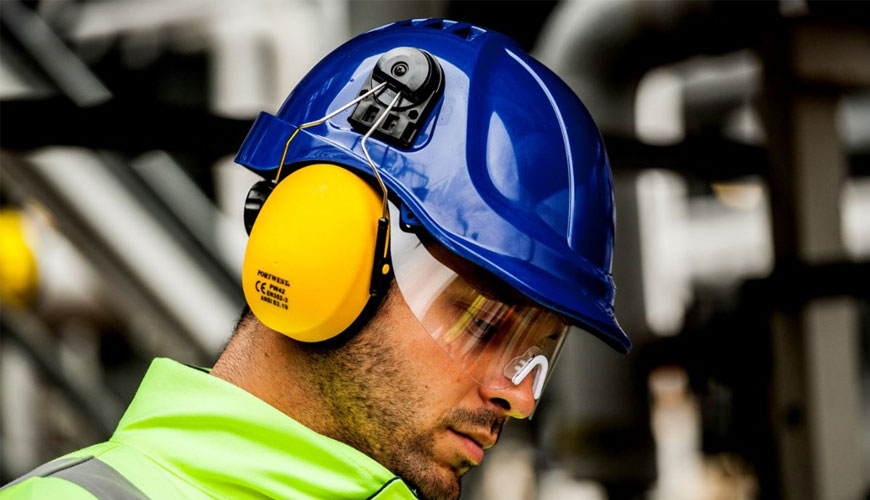

EUROLAB laboratory provides testing and compliance services within the scope of EN 352-3 standard. This part of the EN 352 standard describes requirements and provides test methods for hearing protectors' ability to reduce noise below daily limit levels.

It must be ensured that materials used in the manufacture of the device that come into contact with the skin do not stain and are not likely to cause skin irritation, allergic reaction or any other adverse health effects. The materials and construction evaluation also confirms that the device is free from sharp edges, is safe for use, and that the specified cleaning and disinfection methods do not cause any damage or deterioration of hearing protection.
In addition, the sizing and adjustability of the ear muffs must be in accordance with the head sizes determined by the manufacturer of the product. In this way, it is confirmed that the product can adapt to the targeted consumer.
Sizing and Adjustability
The sizing and adjustability of the ear muffs are evaluated to ensure that the product fits within the manufacturer-specified range of head sizes. This testing is performed using suitable hardware that allows confirmation that the product is a suitable fit for the intended consumer.
Cup Return
The rotation of the cups is measured to assess whether it is sufficient. Sufficient rotation must be available for users to adjust the device for the best fit.
Headband Force
The headband strength of the device is measured using a force rig to ensure that there is no excessive force on the user's head so that the change in headband strength can be calculated after the testing and conditioning scheme is complete.
Insertion Loss
Insertion loss is the algebraic difference between the sound pressure level with and without the ear muff attached to a test fixture. This test does not use human subjects, but rather an acoustic test fixture that simulates the approximate dimensions of the human head. The test is usually performed in an acoustic tunnel with a loudspeaker at one end and acoustically absorbent foam at the other and along the length of the tunnel. It should be noted that this test does not set any limits for the minimum attenuation that should be achieved; It is designed to evaluate the standard deviation of attenuation values to ensure there is no large variation in performance between 10 samples of the same ear-muff pattern.
Minimum Attenuation
The subjective attenuation test essentially uses human subjects to evaluate the performance of a hearing protection device and has the minimum attenuation value to pass the test. The results of these tests are the ones that will be published and available to users when the model goes on sale. This test measures the hearing threshold, which is the lowest sound pressure level detectable by the ear, of 16 human test subjects with and without hearing protection. It is then possible to calculate the performance of the model from these values.
EUROLAB, with its more than 25 years of experience, state-of-the-art accredited laboratories and expert team, helps you get precise and fast results. Do not hesitate to contact our laboratory for your testing and certification requests.
To get an appointment, to get more detailed information or to request an evaluation, you can ask us to fill in our form and reach you.